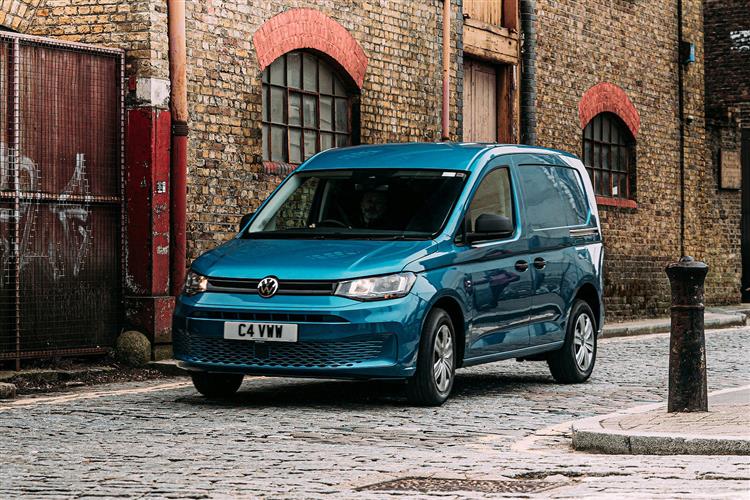A FRESH KIND OF CADDY (some text hidden) --NONE--
By Jonathan Crouch
The Volkswagen Caddy Cargo van rewards buyers looking for a compact LCV with a quality feel and a depth of design engineering often missing from obvious rivals. Jonathan Crouch drives it.
Ten Second Reviewword count: 53
The fourth generation Volkswagen Caddy Cargo is a compact van that's described as 'the Swiss Army Knife of urban delivery vans'. It's polished, economical and quite car-like. Plus there can be an advanced digital interior and a whole portfolio of safety systems. You can even have Plug-in Hybrid tech if you want it.
Backgroundword count: 155
With three million sales on the board, the Caddy is well established as the core starting point for Volkswagen's commercial vehicle line-up. Its history dates back to 1978 and a Golf-based US market pick-up called the Rabbit which was brought to Europe and rebadged 'Caddy' in 1982. But the Caddy's history as a small van really began in earnest with the second generation model of 1995. That became more sophisticated in the third generation form of 2003 which was subsequently offered in lengthened 'Caddy Maxi' form. By now, MPV and Camper variants were also available - and offered with both body lengths. The 'Caddy 4' updated design of 2015 was visually very little different from its predecessor but much more sophisticated in terms of comfort, safety and efficiency. Five years on though, it was time for a more radical change, which brought us to the fourth generation SB-series model we're going to look at here.
Driving Experienceword count: 212
There are a trio of 2.0-litre diesel engine options to kick off, with a choice of 75PS, 102PS and 122PS outputs. All get 6-speed manual transmission and if you go for the 122PS version, you'll be offered the option of a 7-speed DSG auto gearbox. We wouldn't really recommend the relatively feeble entry-level 75PS version unless you'll only be using your Caddy for urban deliveries but the other two variants should offer a decent turn of speed. For the few segment customers wanting petrol power, a 1.5-litre TSI engine with 114PS is available. This Caddy can also be had with an eHybrid 1.5-litre PHEV drivetrain. This uses a high voltage battery and electric motor to deliver a combined 150PS, with 350Nm of torque through the 6-speed dual clutch automatic transmission you have to have. With this Plug-in Hybrid there are various drive modes you'll need to master: 'EV Now', which drives using only the electric motor; 'EV Auto', which balances electric and petrol power to best suit driving conditions; 'EV Later', which drives using only the petrol engine, saving all the battery energy for use later; and 'EV Reserve', which saves a driver-defined level of battery energy for later use. Towing capacity's up to 1.5-tonnes - the same as the top diesel.
To see the full road test text contact us on 0330 0020 227
Pictures (high res disabled)

.jpg)
|
.jpg)
|
.jpg)
| |||
.jpg)
|
.jpg)
|
Statistics (subset of data only)
Min |
Max |
|
Price: |
£24,440.00 (At 3 Apr 2025, C20 SWB Commerce 2.0 TDI 75PS) |
£33,090.00 (At 3 Apr 2025, C20 Maxi Commerce Pro eHybrid22PS DSG) |
CO2 (g/km): |
148 (2.0TDI 122PS) |
11 (eHybrid) |
Max Speed (mph): |
107 (2.0TDI 75PS) |
114 (2.0TDI 122PS) |
Electric WLTP-Rated Driving Range (miles): |
73 |
|
Combined Mpg: |
50.4 (2.0TDI 122PS) |
565 (eHybrid) |
Length (mm): |
4500 |
|
Width (mm): |
1855 |
|
Height (mm): |
1856 |
|
Van Load Capacity (l): |
3 |
4 |
Power (ps): |
75 (2.0 TDI 75PS) |
150 (eHybrid) |
Scoring (subset of scores)
Category: Vans
| Performance | |
| Handling | |
| Comfort | |
| Space | |
| Styling, Build, Value, Equipment, Depreciation, Handling, Insurance and Total scores are available with our full data feed. | |



